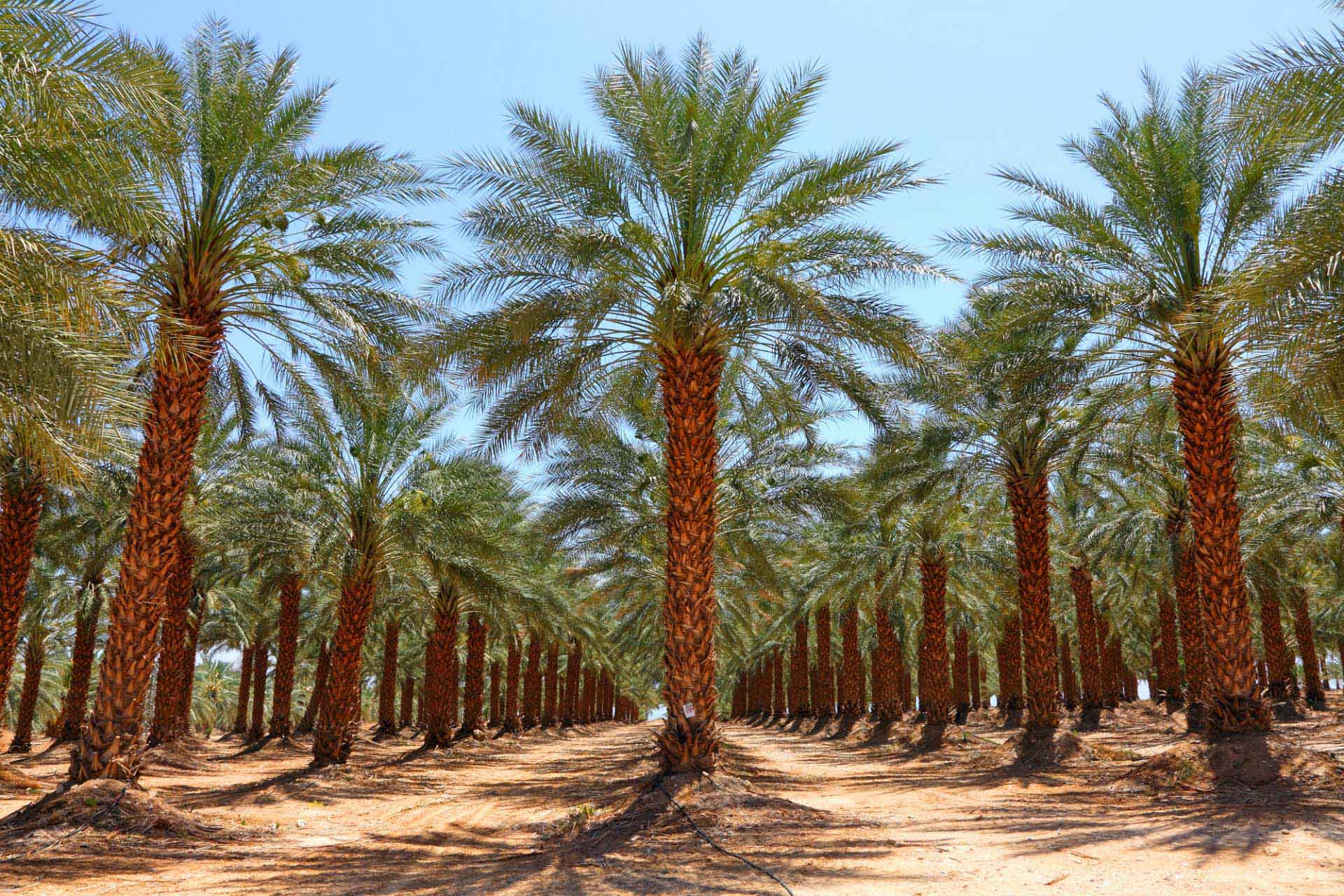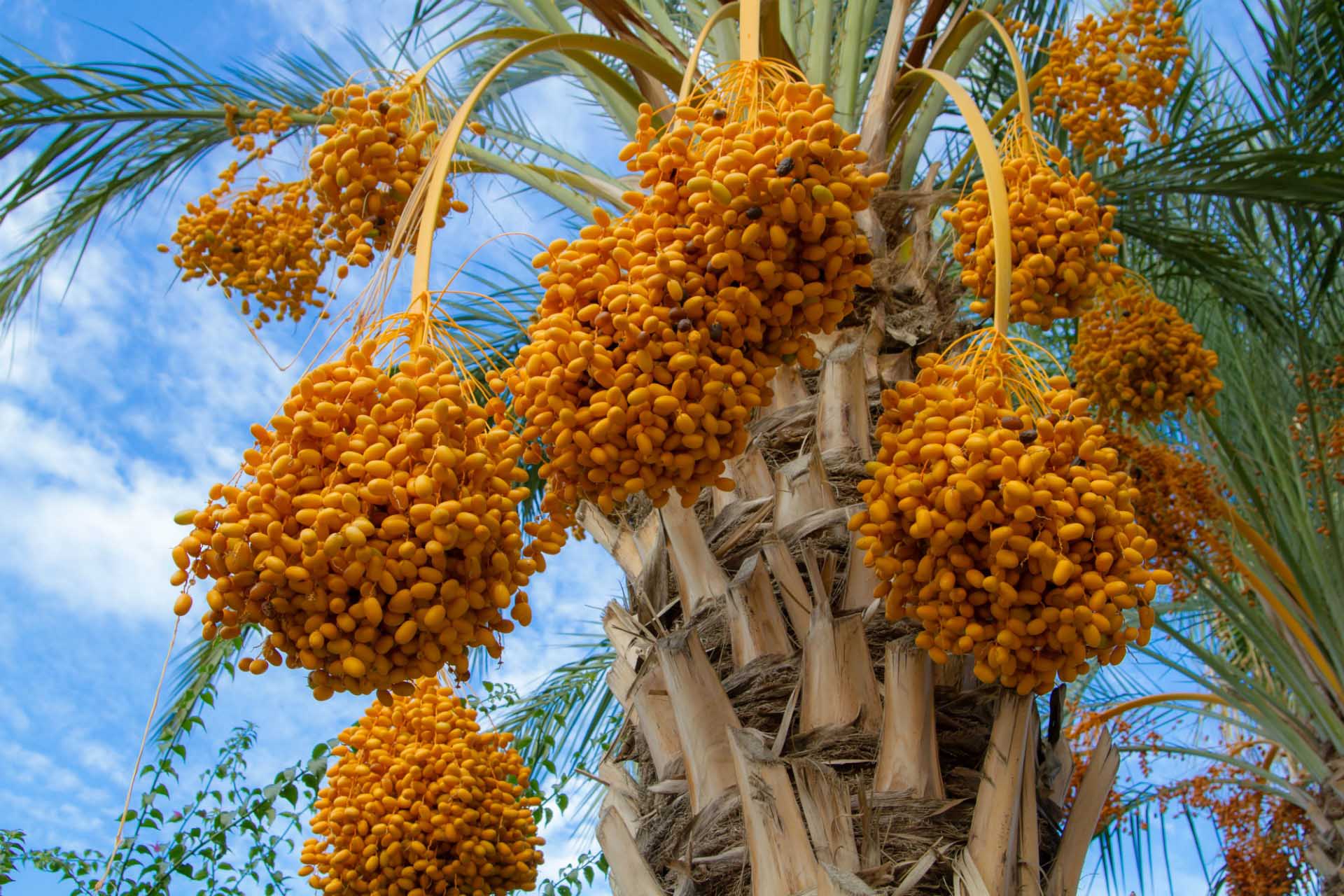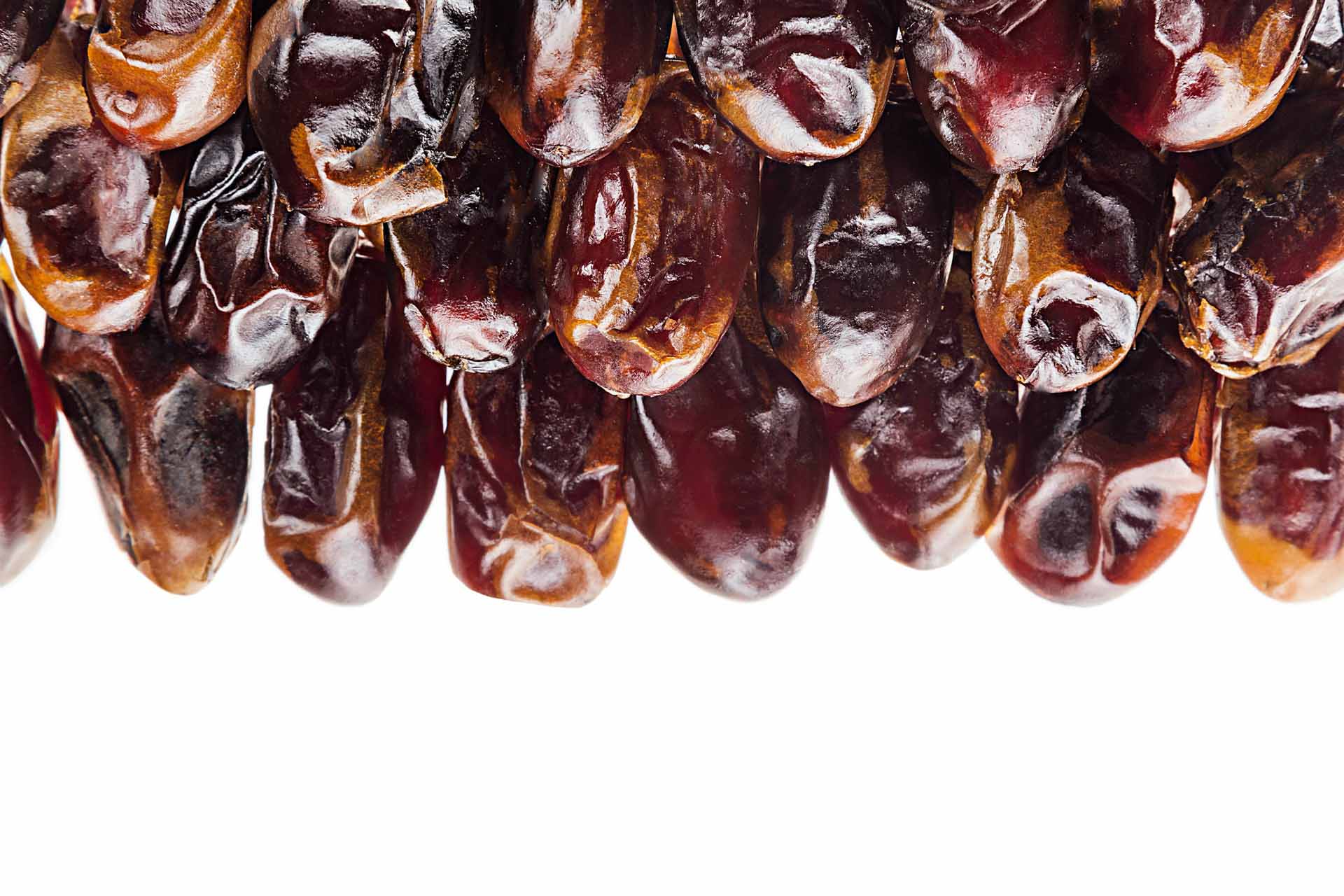History & Origin of Dates
Saudi Arabia contains more than a million date palms, and scored a commendable achievement by doubling its production of dates in 1986. The Kingdom donates 16,000 tons of its annual production of 500,000 tons of dates to the world food program. Madinah’s date market (Souq Al Tumoor) contains about 150 varieties, the most popular of which is Anbara, the most expensive. Other delicious varieties include Ajwa, Halwa, Shalabi, Barnie and Mabroum.
Dates are the fruits of date palm (Phoenix dactylifera) and although there place of origin is unknown because of ancient cultivation; they are believed to have originated around the Persian Gulf, and have been cultivated by the Arabs in the Middle East region from around 6000BC. However this palm is now widely cultivated in many regions of the world and was spread by the Arabs to South West Asia, northern Africa, Spain and Italy, then further spread by the Spaniards in 1765 to Mexico and California.
The sweet fruit became an essential part of the Arabs diet is dates and yogurt or milk are a traditional as a first meal. Alongside its uses for food and beverage, the palm offered many uses including needles, thread, lumber, mattresses, rope, baskets and other household items.






